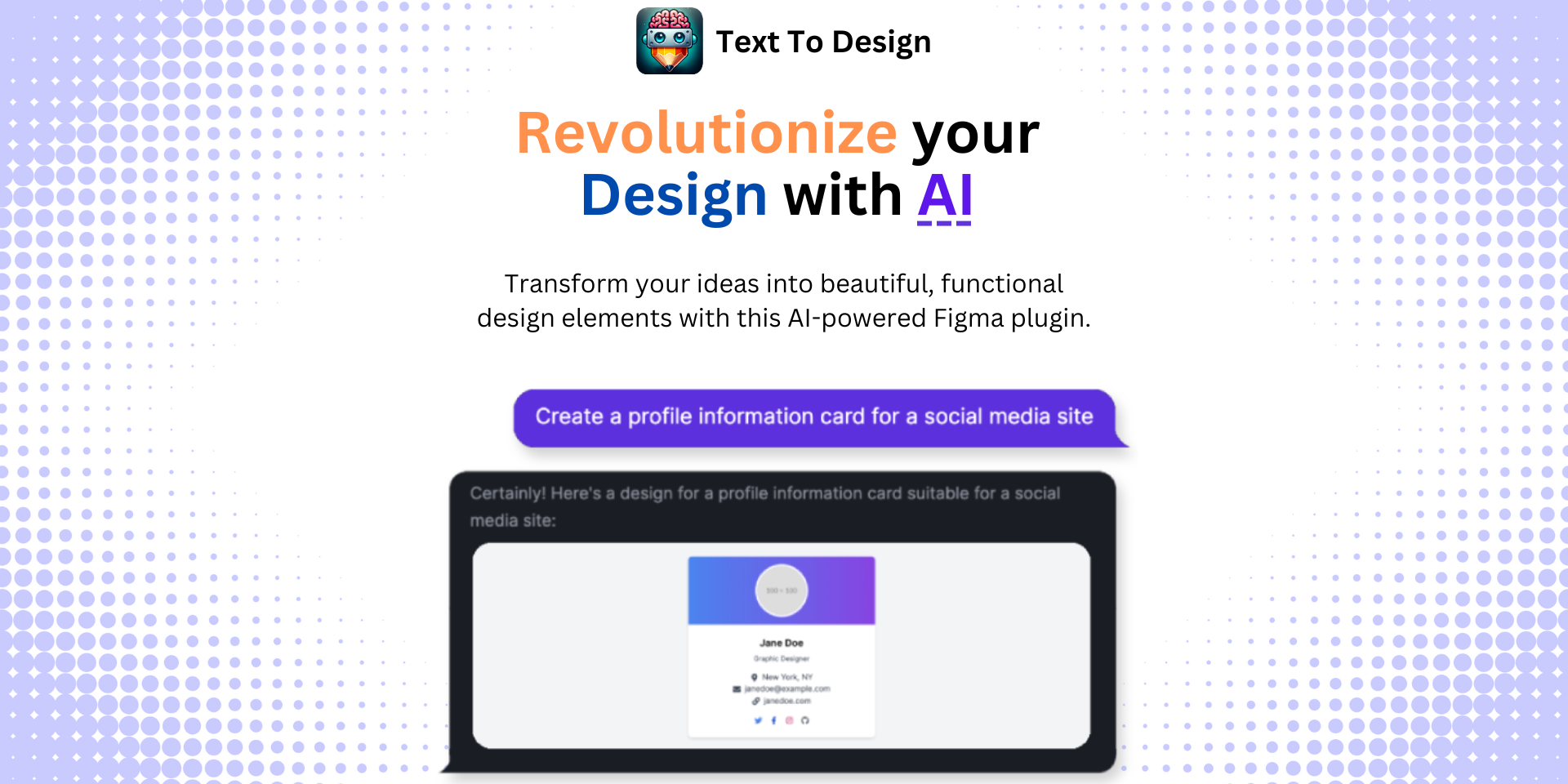Unlocking the Full Potential of Figma: A Deep Dive into Figma API Integration
No results found
9/17/2024
# Unlocking the Full Potential of Figma: A Deep Dive into Figma API Integration ## Introduction Figma has become an indispensable tool for designers and creative teams, known for its real-time collaboration features and interactive prototyping capabilities. But beyond its standard functionalities, Figma offers robust APIs that can significantly enhance your workflow. This comprehensive guide will delve into Figma API integration, exploring how you can leverage these capabilities to transform your design process. ## What is the Figma API? The [Figma API](https://www.figma.com/developers/api) provides read access to Figma files, allowing you to extract any objects or layers and their properties. While primarily read-only, the API can be integrated with various external tools and systems to streamline workflows and improve productivity. ### Key Features of the Figma API 1. **Access to Figma Files**: Retrieve data from Figma files, including objects, layers, and their properties. 2. **Collaboration**: Enhance collaborative workflows by integrating with other tools. 3. **Data Extraction**: Extract and manipulate design data for analytics and reporting. ## Getting Started with Figma API Integration To start using the Figma API, you'll need to generate an API key from your Figma account settings. This key will authenticate your requests to the Figma servers. ### Basic Setup 1. **Generate an API Key**: Go to your Figma account settings and generate a new API key. 2. **API Endpoints**: Familiarize yourself with the different API endpoints available for accessing design files, team information, and more. 3. **Authentication**: Use your API key to authenticate your API requests. ### Example: Retrieving a Figma File ```javascript const fetch = require('node-fetch'); const apiKey = 'YOUR_API_KEY'; const fileId = 'YOUR_FILE_ID'; const url = `https://api.figma.com/v1/files/${fileId}`; fetch(url, { method: 'GET', headers: { 'X-Figma-Token': apiKey } }) .then(response => response.json()) .then(data => console.log(data)) .catch(error => console.error('Error:', error));
Enhancing Workflows with Figma API
Integrating the Figma API with other tools can turn Figma into a central hub for your design workflows. Users have suggested further enhancements to the API, such as enabling programmatic changes to design elements, which would allow for deeper integrations and more efficient workflows1.
Use Cases for Figma API Integration
- Automated Reporting: Generate design reports and analytics automatically.
- Real-time Collaboration: Sync Figma designs with project management tools like Jira or Trello.
- Design Systems Management: Manage and update design systems programmatically.
Advanced Features: Plugin API
Figma also offers a Plugin API that allows developers to create plugins to extend Figma's capabilities. This API offers more interactive functionalities, including the ability to manipulate nodes and layers within a Figma file.
Key Components of the Plugin API
- Global Objects: Access properties and functions that allow you to interact with the Figma document.
- Node Types: Manipulate different types of nodes, such as frames, groups, and components.
- Data Types: Utilize various data types for more sophisticated plugins.
Example: Creating a Simple Figma Plugin
figma.showUI(__html__); figma.ui.onmessage = msg => { if (msg.type === 'create-rectangles') { const nodes = []; for (let i = 0; i < msg.count; i++) { const rect = figma.createRectangle(); rect.x = i * 150; rect.fills = [{ type: 'SOLID', color: { r: 1, g: 0.5, b: 0 } }]; figma.currentPage.appendChild(rect); nodes.push(rect); } figma.currentPage.selection = nodes; figma.viewport.scrollAndZoomIntoView(nodes); } figma.closePlugin(); };
Enhancing Your Design Workflow with Text to Design AI Assistant
Discover how the Text to Design AI Assistant can revolutionize your design process. This advanced Figma plugin uses AI to transform text descriptions into innovative design ideas, saving you time and effort.
Key Benefits
- Efficiency: Quickly generate design ideas from text descriptions.
- Innovation: Leverage AI to explore new design possibilities.
- Integration: Seamlessly integrate with your existing Figma workflows.
Conclusion
Figma's API and plugin capabilities offer immense potential for enhancing your design workflows. Whether you're looking to automate tasks, integrate with other tools, or create custom plugins, Figma provides the resources you need to take your designs to the next level. Start exploring the possibilities today and transform the way you work with Figma.
Call to Action
Ready to see the magic of AI in your design process? Try the Text to Design AI Assistant today and supercharge your creativity! Explore more about Figma's powerful features on the Figma Developers page and join the Figma Community for more insights and resources2.
Footnotes
Step Into the Future of Design with your AI Copilot
Join +40K designers revolutionizing their workflow with AI. Install our Text-to-Design plugin in just a few clicks to unlock your creative potential. Start for free and instantly generate designs for your project.
